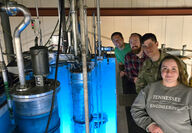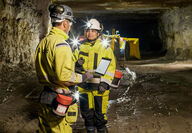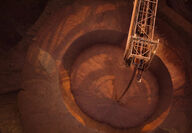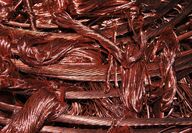Sorted by date Results 1 - 10 of 10

Infrastructure push targets mineral supply, regional growth in Africa. With demand for minerals like cobalt, lithium, nickel, and rare earth elements projected to surge over the next two decades, the United States is positioning itself as a partner of choice for one of the most pivotal players in the global energy transition – not a technology hub or industrial superpower, but an entire continent that holds 30% of the world's mineral reserves, long overlooked in strategic s...

How the new wave of robotics is driving demand for critical minerals. AI-driven robotics are poised to transform industries like manufacturing, healthcare, and logistics, ushering in a new era of efficiency, autonomy, and safety. But behind the sleek machines is a story of material intensity. Whether it's a humanoid on an assembly line or a robodog on the beat, every robot depends on high-performance materials: lithium-ion batteries for power, rare earth magnets for motion,...

Restricts exports of rare earths critical to defense and high-tech. China responded to President Trump's "Liberation Day" tariffs with 34% tariffs on imports from the United States plus restrictions on the exports of a group of seven rare earth elements vital to aerospace, auto manufacturing, nuclear energy, and advanced weapons systems. "This is a precision strike by China against Pentagon supply chains that enable our most powerful weapons and defense systems, from stealth...

Lunar regolith and perovskites offer a path to in-situ power production. Using simulated moon dust, researchers at the University of Potsdam, Germany, have developed lightweight, radiation-resistant solar cells by pairing lunar regolith with perovskite crystals – a potential solution to the logistical challenge of powering future missions, habitats, and infrastructure directly on the Moon without relying on heavy, Earth-made panels. While much of the attention on lunar e...

Testbed simulates deep-space heat for future Mars-bound propulsion systems. Cranking up the heat on space propulsion, researchers at Oak Ridge National Laboratory have developed a high-temperature testbed capable of reaching nearly 4,000 degrees Fahrenheit to simulate the extreme conditions nuclear fuels will face in deep space – a major step toward advancing thermal propulsion systems that could one day carry astronauts to Mars. Though space is often imagined as an endless e...

Sulfide leaching may finally bring old copper mines back online by the successful extraction of hard-to-process waste rock. A century-old copper mine in Morenci, Arizona – the largest in the U.S. – still holds nearly 10 million tons of copper trapped in waste rock. With conventional mining no longer viable there, Freeport-McMoRan is investing in sulfide leaching, an advanced chemical method to extract copper from low-grade ores and waste. "That's the equivalent of a major copp...

Mining equipment and tech company buys full ownership of Radlink Communications. To deliver the high-speed bandwidth needed for the digital transformation of mining operations in remote corners of the world, Epiroc has bought full ownership of Radlink Communications, an Australia-based tech company that designs, installs, and integrates telecommunications networks for both surface and underground mines. The advanced mining technologies offered by Epiroc require secure and...

Transition from diesel and gas to renewable energy by 2030 will take a total capacity of 1,500 MW of solar. Former CEO and current chairman of Fortescue Metals Group Andrew Forrest has presented plans for one of Western Australia's largest solar farms to forward the company's goal of eliminating its use of fossil fuels by 2030; powering its extensive iron ore operations with clean energy is a major step in this direction. Fortescue made headlines back in 2022 with a bold pledg...

Ability to study elusive element could open door to new applications, improve rare earth separation. Though rare earth elements are not as rare as their name implies, promethium is an exception – a truly elusive element with no stable isotopes and an extremely short half-life. Scientists estimate that only around 600 grams (1.3 pounds) of promethium exist on Earth at any given time. While promethium is virtually non-existent in nature, the U.S. Department of Energy Isotope P... Full story

IDTechEx reports the data behind the strategy; can the U.S. learn from its ally? Critical material recovery in Europe is no longer a question of "if" but "when." The EU is rapidly building infrastructure to recover tens of thousands of tons of lithium-ion (Li-ion) battery metals and rare earth elements (REEs) by 2030. However, achieving full-scale material security will require more than just processing capacity – it will depend on effective collection and separation to e... Full story